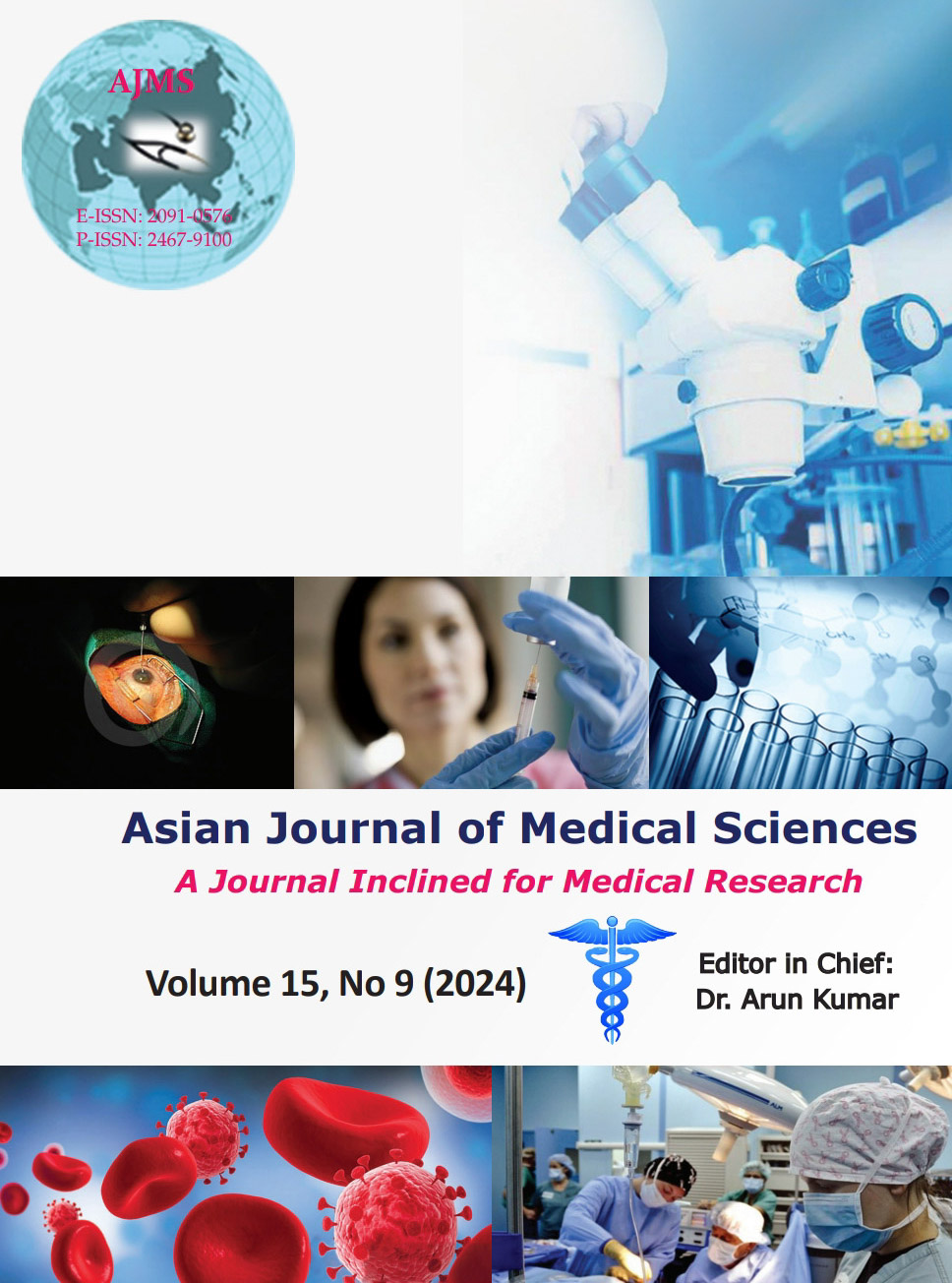A comparative study of the outcome of unilateral versus bilateral internal anal sphincterotomy in treatment of chronic anal fissure
Keywords:
Unilateral internal anal sphincterotomy; Bilateral internal anal sphincterotomy; Lateral internal anal sphincterotomyAbstract
Background: Gold standard treatment for chronic anal fissure is lateral internal sphincterotomy. Bilateral internal sphincterotomy (BIS) as a treatment option for chronic anal fissure has not been evaluated.
Aims and Objectives: The aims and objectives of the study are to compare the efficacy of unilateral versus bilateral internal anal sphincterotomy in treatment of chronic anal fissure.
Materials and Methods: Study design: A prospective randomized comparative study. Study area: Patients coming to General Surgery outpatient department at College of Medicine and Sagore Dutta Hospital with chronic anal fissure. Study period: July 2022 to December 2023 (18 months). Sample Size: 100 patients. Study Group: Group A=Patients who had undergone unilateral internal sphincterotomy (UIS)=50 patients and Group B=Patients who had undergone BIS=50 patients.
Results: 2 (4%) patients in Group A and 3 (6%) patients in Group B developed incontinence for flatus postoperatively. No patients in either group developed incontinence for stools. The Mean Fissure Healing Time (Mean±SD) (Weeks) post-sphincterotomy was 4.32±0.91339 in Group A and 2.66±0.65807 in Group B. There were 6 cases of recurrence in the unilateral sphincterotomy group. Second surgery was needed in 4 patients who underwent unilateral sphincterotomy.
Conclusion: As compared to UIS, BIS results in a faster healing of chronic anal fissure, with no increase in incontinence, decreased pain score, and less recurrence rates.
Downloads
Downloads
Published
How to Cite
Issue
Section
License
Copyright (c) 2024 Asian Journal of Medical Sciences

This work is licensed under a Creative Commons Attribution-NonCommercial 4.0 International License.
Authors who publish with this journal agree to the following terms:
- The journal holds copyright and publishes the work under a Creative Commons CC-BY-NC license that permits use, distribution and reprduction in any medium, provided the original work is properly cited and is not used for commercial purposes. The journal should be recognised as the original publisher of this work.
- Authors are able to enter into separate, additional contractual arrangements for the non-exclusive distribution of the journal's published version of the work (e.g., post it to an institutional repository or publish it in a book), with an acknowledgement of its initial publication in this journal.
- Authors are permitted and encouraged to post their work online (e.g., in institutional repositories or on their website) prior to and during the submission process, as it can lead to productive exchanges, as well as earlier and greater citation of published work (See The Effect of Open Access).




